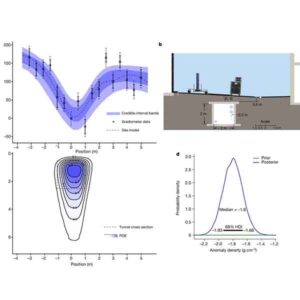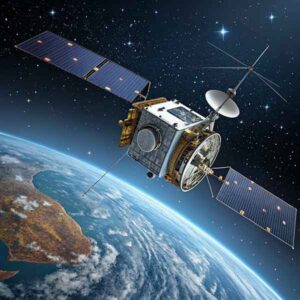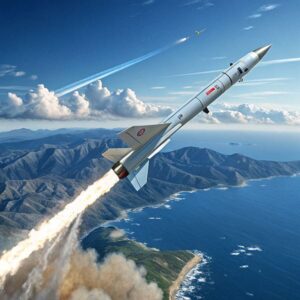Gravity Meters
A gravity meter is a high-precision measurement instrument used to detect minute variations in the Earth's gravitational field. By measuring gravitational acceleration at different locations and times, it helps us better understand the physical characteristics of the Earth, explore mineral resources, monitor seismic activity, and more. The core technology of gravity meters includes several components, with the most critical being the sensor unit.
Components of a Gravity Meter and the Role of Each Part
A typical gravity meter consists of the following key components:
- Sensor Unit: Responsible for measuring acceleration changes, directly impacting the measurement accuracy.
- Data Collection and Processing System: Collects data from the sensor and processes it to obtain accurate gravity acceleration values.
- Display and Control System: Displays results to the user and allows for the operation and adjustment of the instrument.
- External Components: Such as batteries, enclosures, and mounts, which support the sensor and ensure its stability.
Sensor Unit: Quartz Accelerometer
The most crucial sensor in the sensor unit of a gravity meter is often the quartz accelerometer. Quartz accelerometers operate based on the piezoelectric effect of quartz crystals. The core principle is that when acceleration acts on the accelerometer, the quartz crystal undergoes a tiny deformation, and the change in charge is used to detect acceleration variations.
Working Principle of Quartz Accelerometers
A quartz accelerometer consists of a fixed base and a suspended mass. The mass is connected to the quartz crystal. When the object is subjected to external acceleration, the mass moves, causing the quartz crystal to deform. This deformation generates an electrical signal, which is captured by the sensor and converted into a voltage change. By analyzing these voltage changes, the gravity meter can precisely measure the magnitude and direction of acceleration.
Advantages of Quartz Accelerometers
- High Precision: Quartz accelerometers provide extremely high accuracy, making them suitable for applications with strict requirements.
- Strong Stability: Due to the nature of quartz materials, quartz accelerometers exhibit excellent stability under changes in temperature, humidity, and other environmental factors.
- Long-Term Reliability: Quartz accelerometers have a long lifespan and require minimal maintenance, making them ideal for long-term use.
- Resistance to Interference: The design of quartz accelerometers gives them strong resistance to electromagnetic interference, ensuring stable measurement results even in complex environments.
Applications of Quartz Accelerometers
The precision and reliability of quartz accelerometers make them widely used in various fields. Some typical applications include:
- Seismic Monitoring: Quartz accelerometers are used extensively in seismic monitoring equipment to track the propagation of seismic waves and analyze the intensity and origin of earthquakes.
- Navigation Systems: In IMUs (Inertial Measurement Units), quartz accelerometers work in conjunction with gyroscopes to provide precise positioning and navigation, applied in aerospace, autonomous driving, and other fields.
- Industrial Inspection: Quartz accelerometers are used in industrial equipment vibration detection, helping engineers monitor the health of machines and prevent failures.
- Automotive Safety: In modern cars, quartz accelerometers are used in collision detection systems to accurately sense the acceleration changes during a collision and trigger safety measures like airbags.
Features of Gravity Meters
The measurement accuracy and reliability of gravity meters are influenced by several factors, including sensor quality, environmental conditions, instrument calibration, and maintenance. Despite this, modern gravity meters have some distinct features that make them indispensable for high-precision measurements.
- High Sensitivity: Gravity meters can detect minute gravitational changes, with precision up to microGals (μGal), making them suitable for tasks with strict precision requirements, such as geological exploration.
- Versatility: In addition to basic gravity measurement functions, modern gravity meters also offer data processing, storage, and remote transmission, greatly improving work efficiency.
- Portability: Some new gravity meter designs are more compact, making them ideal for field exploration and other tasks that require high mobility.
- Stability: With advanced sensor technology and efficient data processing systems, modern gravity meters maintain long-term stability and accuracy.
Applications of Gravity Meters
Gravity meters have broad applications in several fields, especially in geological exploration, environmental monitoring, oil exploration, construction, and more. Below are some specific application areas:
- Geological Exploration: Gravity meters are used in geological surveys to help scientists study density variations in underground rock layers, assisting in the search for mineral, oil, and gas resources.
- Environmental Monitoring: Gravity meters are used in environmental monitoring to detect small changes in ground subsidence, groundwater levels, and other environmental impacts.
- Construction and Engineering: In construction and infrastructure projects, gravity meters measure geological conditions around buildings and provide data support for engineering design and construction.
- Aerospace: In spacecraft, gravity meters are used as part of the inertial navigation system to assist with precise orientation and positioning without relying on external signals.
- Military Applications: Gravity meters are used in submarines and other military equipment for navigation systems, providing highly accurate positioning information.
Precautions for Using Gravity Meters
When using gravity meters, several precautions should be taken to ensure accurate measurements:
- Regular Calibration: Regular calibration is essential to maintain the accuracy of the gravity meter. The precision of any sensor will change over time, so periodic checks and calibrations are necessary to ensure data accuracy.
- Environmental Adaptability: The operating environment significantly affects measurement results, especially temperature and humidity. Try to avoid using gravity meters in extreme weather conditions.
- Stability Assurance: Gravity meters should be used in stable environments, and efforts should be made to avoid vibrations and electromagnetic interference that could distort measurement results.
- Proper Storage: When not in use, gravity meters should be stored in a dry and clean environment to prevent physical damage.
Future Development Prospects of Gravity Meters
As technology continues to evolve, the future of gravity meters holds broad potential, especially in the following directions:
- Miniaturization and Portability: With advancements in microelectronics, gravity meters will become more compact and portable, making them suitable for a broader range of field exploration tasks.
- Intelligent Features: Future gravity meters will be equipped with more intelligent data processing capabilities, allowing them to perform automatic data analysis and anomaly detection, reducing the need for manual intervention.
- Integration: Gravity meters are likely to be integrated with other measurement devices (such as gyroscopes and magnetometers), providing more comprehensive spatial positioning and measurement services.
- Higher Precision: With advancements in materials science and sensor technology, the precision of gravity meters will increase, enabling the measurement of even smaller gravitational variations and expanding their application in various fields.
Conclusion
Gravity meters, as precision instruments, play a crucial role in various fields. Their core sensor unit, the quartz accelerometer, with its high precision, stability, and reliability, is an indispensable part of modern gravity measurements. As technology continues to advance, future gravity meters may incorporate new sensors, further enhancing their performance and application range.





